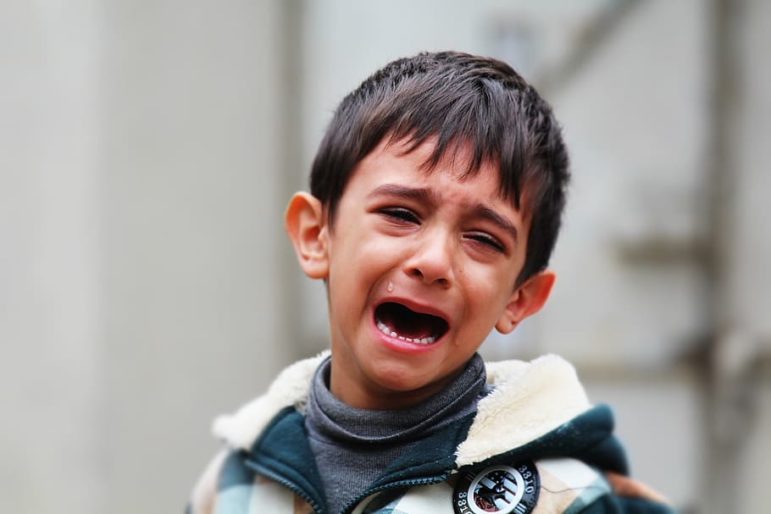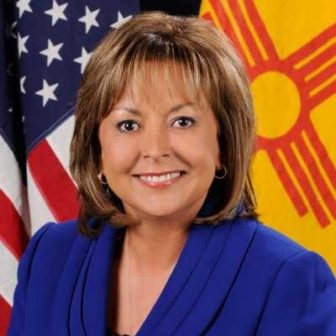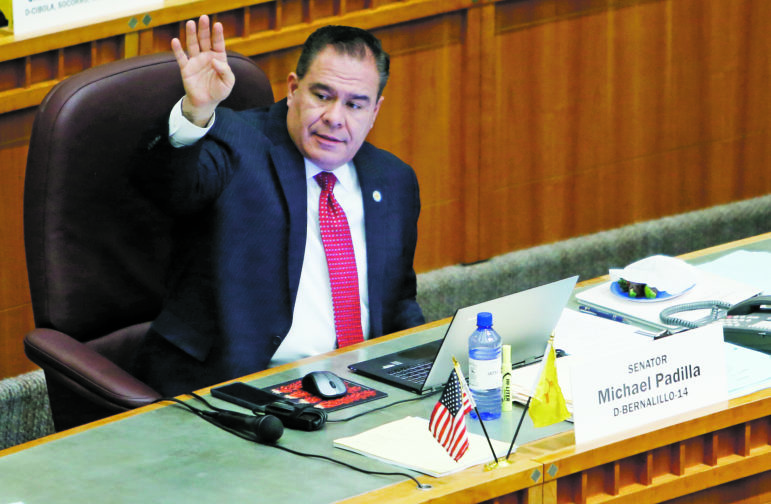
Piqsels
.
Jordan, a teenaged foster youth, has lost count of all the places she’s lived in the state, including the streets of New Mexico, off and on since 2016.
“I was going to get adopted, but it didn’t happen. If you don’t get adopted, people just think you’re a mess with all kinds of problems. They just throw us in a group home and then either we age out or we move. To me, that’s how it is,” said Jordan, 17, who asked to go by a pseudonym for this story.
She became homeless because none of her New Mexico Children, Youth, and Families Department (CYFD) foster care placements worked out, she said. She sought help from an outside organization, but there aren’t many in New Mexico, which also lacks enough basic housing and health care services for the state’s most vulnerable populations. While she was in and out of homelessness, Jordan gave birth twice, but the children were later taken away by CYFD, shattering her tenuous existence.
It’s tough to be a youth — foster or otherwise — in New Mexico. The Annie E. Casey Foundation Kids Count report, which measures child well-being indicators such as child poverty rates, reading proficiency, substance abuse and teen birth rates, ranked the state dead last in the country for overall child well-being in 2017 and 2018. At the same time, the state’s child abuse rate steadily climbed and currently hovers at nearly twice the national average.
Critics say that CYFD, the state’s child protective services agency, actually makes life harder for New Mexico’s youth in care. (As of June 2019, there were 2,380 children in foster care, according to CFYD’s 360 Quarterly Report.)
A blistering federal lawsuit against CYFD filed by Disability Rights New Mexico and the Native American Disability Law Center says New Mexico’s emotionally shattered, and sometimes physically battered, foster youth are systematically retraumatized in a poorly designed system that’s ill-equipped to rehabilitate them.
“New Mexico’s broken system of child welfare fails to provide the stability and support that children in state custody need to be safe and healthy, locking New Mexico’s foster children into a vicious cycle of declining physical, mental, and behavioral health, and increasingly inappropriate, restrictive, and punitive placements and treatment,” the lawsuit says.
Jolene Martinez, clinical director of the Las Cruces-based Families and Youth, Inc. (FYI), points out that many New Mexico families aren’t socioeconomically stable enough to care for a foster youth, due to a paucity of state services.
“We’re asking families that are already under-resourced themselves to be resources for children,” said Martinez, who’s also a foster parent to two children. “I think that’s an extraordinary ask for the average New Mexican to take on the needs of another child, and not just any child but a child with complex needs.”
New state laws
Despite a troubled track record with child well-being, a change for the better may be emerging.
During the 2019 New Mexico legislative session, Gov. Michelle Lujan Grisham signed a number of robust child well-being laws that legislators hope will reform foster care. In a June keynote speech during the Kids Count Conference in Albuquerque, she said she hasn’t been able to sleep since learning that CYFD staff is overwhelmed and unable to investigate “hundreds” of referrals for child abuse and neglect allegations. CYFD has also been hampered by a dearth of qualified social workers, a lack of adoptive families and a number of child abuse cases, according to court filings from several cases.
CYFD public information officer Melody Wells says the agency has made great strides since Brian Blalock, the Cabinet secretary for CYFD, came onboard in January 2019. “I’ve never heard of or seen a new administration come in and make so many large-scale changes that are actually affecting positive change so quickly,” she said. One of CYFD’s main focus areas is increasing the amount of caseworkers, she said.
Over the coming months, Youth Today will take a comprehensive look at the challenges of New Mexico’s foster youth and families as well as state organizations, such as CYFD, the Human Services Department and the Public Education Department, whose job is to keep statewide youth in care safe and thriving.

National Governors Association
Former Gov. Susana Martinez
The series will also analyze recent state-level statutory changes as well as proposed future legislation that may be able to keep New Mexico’s kids shielded from the juvenile justice system. It will also look into the downstream impacts of former Gov. Susana Martinez’s 2013 decision to stanch Medicaid funding to private mental health providers, which disrupted life-saving services for countless New Mexicans.
For now, disturbing child abuse cases continue to cast a dark pall over the state. Perhaps the most notorious incident — Victoria Martens, the 10-year-old Albuquerque girl who was raped, burned, dismembered and found dead inside a bathtub in August 2016 — recently thrust itself into the news cycle when Fabian Gonzales, one of the original murder suspects, was released from jail on Nov. 19.
Before the gruesome crime, CYFD had received at least four calls about the safety of Victoria and her brother but were unable to substantiate the charges. A CYFD internal review concluded that investigators were “thorough and complete” and that staff members upheld “state statute and agency policy and procedure.”
“I’ve never blamed CYFD for the horrific crimes that have happened with children. I have blamed things like generational poverty and hunger and unemployment rates and how we look at Native populations,” said state Sen. Michael Padilla, who knows the state foster care system on a personal level — he was in it from 6 months of age to 14. “But now I’m very encouraged by where things are going. However, we have a long way to go. A long way to go.”
‘The Crisis Department’
When Kevin S. was a kid, his mother’s partners sexually and physically abused the boy on a regular basis, according to court documents in the lawsuit against CYFD. In 2009, he entered the foster care system, where he was diagnosed with post-traumatic stress disorder and other mental health challenges. Instead of helping the Bernalillo County teenager, CYFD exacerbated Kevin S.’s trauma, the suit charges.
CYFD hasn’t come close to giving Kevin S., who dreams of attending college to play basketball or football, a stable foundation, the 95-page complaint says. The Latino teenager spent two nights in a CYFD office but ran away and was later found ducking in and out of traffic. He was sent to a Colorado residential treatment center, where he suffered physical and emotional torment by the staff and the other foster care residents, the complaint says.
Additionally, the lawsuit blames former CYFD Cabinet Secretary Monique Jacobson and then-Human Services Department Secretary Brent Earnest, who were both Gov. Martinez appointees, for violating five federal laws, including the American Disabilities Act and the Indian Child Welfare Act. The Human Services Department receives approximately $7.1 billion in federal and state funds to administer over a dozen programs, such as Medicaid and Children’s Health Insurance Program (CHIP), to more than 900,000 low-income New Mexicans.
[Related: In Santa Fe, NM, ‘We’re not going to play the blame game’]
[Related: Lack of Affordable Housing, Enough Foster Families Hurt Taos, NM, Area]
[Related: Provider In Las Cruces, NM, Left Stretched Thin]
[Related: Carlsbad, NM, Oil Windfall Makes It Harder to Keep Caseworkers]
CYFD, which includes protective services and juvenile justice services divisions, is meant to protect the welfare of New Mexico’s kids and families. (CYFD’s early childhood services division is scheduled to transition to a new state Early Childhood Education and Care Department by July 2020.)

Luis Sánchez Saturno/The New Mexican
State Sen. Michael Padilla, shown here during the 2019 legislative session, was in the state foster care system until he was 14. He still keeps in touch with his former caseworker.
However, the embattled organization, which is operating under a fiscal year 2020 budget of approximately $582 million, has morphed into something entirely different, Padilla said.
“I believe CYFD had good intentions when it was created, but now it’s simply too large and unruly,” he said. “It’s basically the crisis department in my opinion.”
Frozen funds = fewer providers
A 2017 report by the Children’s Bureau of the U.S. Department of Health and Human Services shows that the state’s rate of substantiated child abuse and neglect — 17.6 victims per 1,000 children — is nearly twice the national average of 9.1 children. Only Kentucky, Massachusetts and Indiana eclipsed New Mexico’s child abuse rate.
While critics are often quick to point the finger at CYFD for the state’s dismal child well-being outcomes, the advocacy group New Mexico Voices for Children says it has pinpointed another reason for the escalating child abuse rate, one that appears to be out of CYFD’s control.
In 2013, then-Gov. Martinez claimed that 15 private mental health providers committed fraud and promptly froze their Medicaid funding. Three years later, the state Attorney General’s Office couldn’t find any evidence of wrongdoing, but not before many of these providers were forced to fold.
The void has capsized the lives of vulnerable New Mexicans, especially in regions such as southern New Mexico, Martinez of FYI said. Since there isn’t a psychiatric hospital in Doña Ana County, Las Cruces area residents with long-term behavioral challenges are forced to seek support at a Texas state mental hospital in El Paso.
“As the mental health services were basically taken away from families and adults and parents who really needed them, there was a corresponding decrease in their ability to handle life and parenting in a way that’s healthy for their kids,” said Amber Wallin, deputy director at New Mexico Voices in Albuquerque. “We believe that’s part of the reason we saw an increase in the child abuse rate at that same time. Otherwise, it was improving across the country at the same time.”
System Reforms
Among the pieces of child well-being legislation Grisham signed during the 2019 legislative session was the Padilla-sponsored Early Childhood Education and Care Department Act. The brand-new cabinet department grabs several of the state’s early childhood development programs, including CYFD’s early childhood services division, and places prenatal-to-age-5 services under a new centralized clearinghouse.
The state legislature also extended foster care services from age 18 to 21, expanded eligibility of a 2014 statute that waives tuition costs for state foster youth attending New Mexico’s post-secondary institutions and passed a law that gives youth in care partial earned credits if they transfer from one secondary school to another.
Additionally, funds from the federal Family First Prevention Services Act (FFPSA), introduced by a number of members of the U.S. Congress, including New Mexico Democratic Rep. Deb Haaland, became available Oct. 1. The bipartisan child welfare reform statute allows states and tribes to direct federal money to family and child well-being services in order to try to keep kids with their families. In decades past, these types of federal dollars were only available after a child was removed from their family.
A number of state lawmakers and child advocacy organizations are also encouraged by Blalock’s quick-acting reforms. Wells of CYFD says the organization recently began a program that gives employees a stipend for a social work degree and created an information portal that helps Albuquerque Police Department officers when they’re responding to a domestic dispute call involving a child.
Additionally, CYFD recently got a grant from the Bernalillo County Board of Commissioners to establish the state’s only safe house for young victims of human trafficking.
“Foster youth are much more targeted by traffickers, who are savvy and know how to watch for young people that don’t feel connected to adults in a healthy way, as well as young people who are used to abuse and neglect,” Wells said.
Despite systemic challenges, Padilla is encouraged that the state’s foster care system is heading toward a healthier incarnation. He’d like to see closer controls and relationships between case workers and foster children, much like what he experienced as a foster youth. Padilla, 46, was an infant when his case worker, who’s now 84, came into Padilla’s life. The two still keep in touch.
“I remember how he would pick us up in his green truck and take us to get ice cream and ask us questions and work with us. We would see him regularly and I’ve known him this whole time,” Padilla said. “I stop in and check on him. He’s a really good human being. He was probably one of the best male role models I had as a child.”
Jordan says she eventually jumped through all of CYFD’s hoops to gain custody of her children. Though she’s back on her feet, one minor catastrophe could send her life spiraling out of control for the umpteenth time. For now, an optimistic Jordan is focused on attaining a GED so that she can work, provide for her family and avoid a return to the streets.
“From what I’ve been through, I actually feel like it was a good thing because it made me even stronger and makes me a better mom,” she said. “I don’t want to put my kids in that situation.”
This story is part of a Youth Today project on foster care in New Mexico. It’s made possible in part by the May and Stanley Smith Charitable Trust. Youth Today is solely responsible for the content and maintains editorial independence.



























